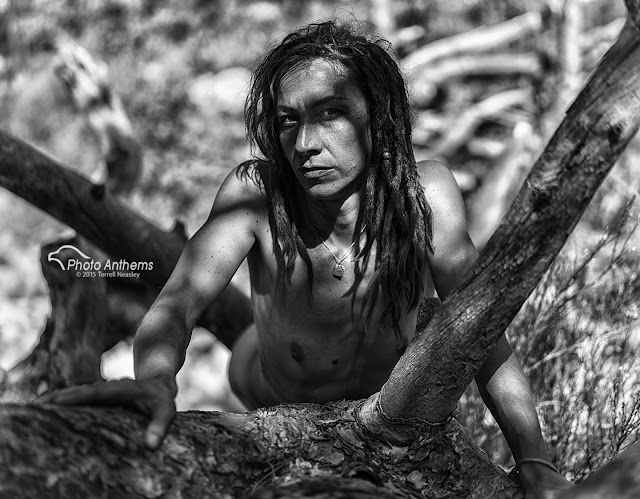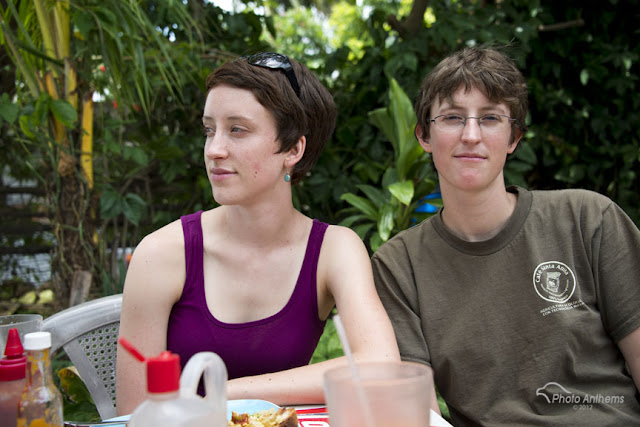 |
| Antigua, Guatemala, Sony A7MkII f/8, 1/500 at ISO 100 |
"Without change there is no innovation, creativity, or incentive for improvement. Those who initiate change will have a better opportunity to manage the change that is inevitable."
~ William Pollard
So its been since this past December that I made that move, ala #SwitchHappens, when I picked up the
Sony A7s. Then in February, right before I left for Central America, I packed the
Sony A7MarkII in a new
ThinkTank Retrospective 30 bag. As for lenses, I've had to make a few switches that finally worked for me, especially in the wide-angle market. I initially went for the
Rokinon 14mm T3.1 as I owned with my Nikon D800E (which was absolutely superb). But after a few weeks of use, I didn't think it was my best bet. What proved to pass the test with flying colors was the
Sony 16-35mm f/4 wide-angle zoom lens. The sharpness and quick auto-focus won me over, even though I was initially settled on prime lenses only. I had to pick up a portrait prime, the
55mm 1.8 and these two have proven to be the one-two punch I was looking to travel with. Not a complaint, one.
So here are my TOP FIVE reasons the switch is best for me and why I think you'll benefit as well.
 |
| El Salvador, Sony A7S f/5.6, 4 seconds at ISO 1600 |
1. Size and Weight - This is the obvious benefit so I begin with the easiest. Back in the day, it was difficult to be taken seriously unless you had a bigger, heavier camera. This tended to be a natural barrier to entry to female photographers who may have stuck with rangefinders. After spending a little time working in
B&C Camera, I also learned that amateur and pro photogs alike would add on a battery grip to give that extra heft and appearance that says "I am serious. I am a pro" look. I know this to be fact as I have heard it admitted quite often. The lenses are also just as small for the most part.
But today, this isn't necessary. Even for someone with large hands, you quickly get used to the size of the Sony mirrorless systems. You don't go out to eat and request the XXL forks, just because you have big hands. You'll get used to it. As of yet, I have not seen nor heard of a single photographer that makes the switch and then later goes back to the DSLR. Not one. There's no need to pack extra weight just because. Because what? If you can get the same exact results or better in a smaller package, why not do it and save yourself the carpel tunnel, tennis elbow, and chiropractor visits for your bad back. And you know what else? People aren't as intimidated when I pull this camera out for street photography. You can't say as much as when you level a big DSLR in their faces.
2. Sensor quality - Okay, when the first high resolution DSLR came out, do you know who made the sensor. It was in the Nikon D800/800E, yes. But the sensor was made by Sony. Sony has been a premier sensor maker for quite some time and even makes medium format sensors. That bad ass 51MP Pentax 645Z? Yep,
that's a Sony sensor. Is that an iPhone 6 or 6 Plus in your pocket. Yeah, Sony's got that sensor too. If you look at the top sensors rated by
DXOMark.com, Sony has 5 of the top 6. Only the top-rated D810 (score of 97) is not a Sony manufactured sensor as far as I know and I hadn't been able to verify the Nikon D750. None of the Canon sensors have ever been rated above a score of 87 and that includes new 50MP full-frame sensors in the Canon 5DS and 5DSR.
"Sony owns an estimated 40.2 percent share of image sensor market - According to market research estimates, in 2014 Sony made 40.2 percent of all image sensors, leaving its rivals in the sector far behind. Presumably, this figure includes sensors made for things like automotive and industrial uses, but there's no doubt that it also accounts for the front and back sensors in Apple's iPhone 6 models, both made by Sony."
 |
| Sony A7s, f/11, 1/640 ISO 1600 |
3. Chock Full of Features I Can and Do Use - Who's ever heard of
focus peaking? Ever have that with your DSLR? No you haven't. The Electronic Viewfinder is good even in the dark. It switches from LCD screen mode to Viewfinder mode automatically as soon as I look through the viewfinder. I can view the replay of my images or video through the viewfinder even in bright sunshine. Again...Not on a DSLR. Here's one feature a DSLR has that a mirrorless camera doesn't...Mirror Lock-Up. Why? Because there is no mirror to begin with. How about wireless control with my iPhone 6Plus? Yep. I got that. Know what else I can run on my camera, Apps. Yeah, just like my phone. I can put my A7s in silent mode and there is actually no sound produced when I take a picture. I likes. In addition to that, I can record 4K video on my A7s (to an external output recorder) and when the A7rMkII comes out this month, it will do it too (straight to the SD card!). See what I mean? Full of features.
 |
| Just waking up. Guatemala. A7S, F/4, 125, ISO 5000 |
4. Lens Quality - This is the spot that has taken a little time. I'd have been on the mirrorless bandwagon a while back, but its taken a liiittle bit of time to develop all the E-mount lenses, especially for the full frame versions. Two years after the debut, WALLA!! Everything I need, PLUS some. But let me get to the plus in a second. My main needs are wide-angle and portrait. Well, they have that in spades. The 16-35mm f/4 covers the gamut on my wide needs well enough to keep me from looking any further. And Portrait? Zeiss glass that has come to the rescue like a knight in shining armor. No kidding on that. Especially the primes. But Zeiss has also designed zooms for Sony. I'll likely be mostly prime-oriented though. Next purchase, the
90mm 2.8 macro. Gotta have it. After that, I'll likely be looking at the Zeiss Batis Series in both the
85mm 1.8 and the
25mm f/2. And just to play, I may work with the Voigtlander Nocton 50mm f/1.1 just for giggles. Remember that aforementioned "PLUS", well because of the short flange focal distance, there is pretty much an adapter that can fit to mount any other manufacturer lens. Got Canon lenses you don't wanna give up...maybe like the EF 85mm 1.2? Well, you can get a
Metabones adapter and use Canon glass on the Sony full frames. Yes, you heard me correctly.
5. Corporate Sensibilities - I like options. Like... a lot. Very much so. And I gotta give it up to Sony for being the top innovator as it relates to Digital Cameras, IMHO. Working in a camera store, I get to see many of the different manufacturers and it still amazes me that the ones at the top (Canon and Nikon) still ignore the changing of the guard, much to the same chagrin as Kodak which held onto film a little bit too long. Kodak was the original pioneer in digital and yet failed to see its true worth. Nikon and Canon fail to see the advent of the mirrorless systems and thus continue to produce predictable systems as if the Megapixel and ISO race is still valid. So here is a quick rundown of how Sony as a corporate philosophy has garnered my attention.
 |
| Sony A7S f/4, 1/30, ISO 160 |
First, they don't give me pro cameras in a
vertical hierarchy. With DSLR manufacturers, my options are limited to budgetary concerns. Get the best you can afford. You buy a DSLR in your price range and you either get the best or sacrifice options.
With Sony, the hierarchy is horizontal. I don't need all of Canon's full-frame systems which are PRICE-based. However, I can very much see owning all of Sony's full-frame systems because they are NEEDS-based. If I only need a general use system, I can get the
A7MarkII. But what happens when I'm doing lowlight work or need to be discrete with streetphoto work? Well, I can get the
A7s which has the best high ISO performance of any camera on the market and has an absolutely soundless shutter in silent mode. OR, if I need high resolution, I can opt for the new
42MP A7RMarkII coming out next week sometime. That's 3 full-frame systems that I can justify owning and they don't sacrifice features or options. I don't get less of a camera because I get the general use A7MarkII. These systems back up each other as well as compliment each other. And yes, I will own all 3.
I also like the fact that Sony has not been afraid to spend money in R&D and bring new products to market. The Q-systems was a lens that could utilize the sensor on your smartphone via NFC. They developed 2 or 3 different ones. We sold several at
B&C Camera, but they never really caught on. It didn't make them gun shy. They went on with the next thing. The NEX system eventually gave way to the Alpha system. They developed a market and then cultivated it over 5 years. Real innovation is encouraged as opposed to several other camera manufacturers which elect to stay traditional and conventional, ignoring market concerns. As I mentioned. I watch people switch ALL. THE. TIME. I know pros and amateurs alike who WANT to switch, but can't quite get past the notion of trading out all their old investment in DSLRs and lenses. I also introduce new consumers who only know Canon or Nikon to Sony and see the reaction on their faces when I tell them the
A6000 is a less costly, smaller yet viable 11- frames per second direct competitor to ANY DSLR crop (DX) system. All I have to do is put it in their hands. The look in their eyes tell the story.
 |
| Sony A7MarkII f/8, 1/250, ISO 100 |
So you definitely have some choices in the mirrorless market. Behind Sony, I like the
Fujifilm system and lenses. Then there is the micro-four thirds systems by
Panasonic and
Olympus. I recently picked up the
Panasonic G7 as in inexpensive option to help me, as on option with some of my video work and moments when I don't want to risk my main systems and investment in Sony. But make no mistake, for now, Sony is still my best idea to date in a camera. Of all the systems I have ever owned, its by far my favorite.
google-site-verification: google96ab57fb9d260a64.html




















































